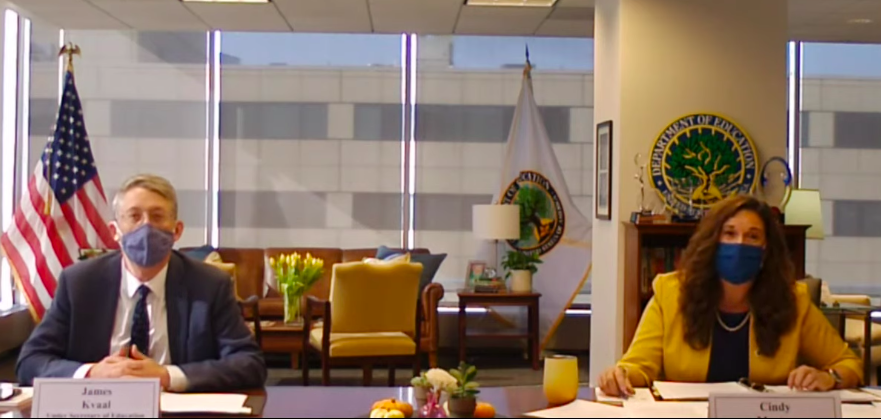WASHINGTON — The Department of Education is engaged in ongoing monitoring of the use of COVID-19 relief funds after approving the funding plans of 46 states, department officials told lawmakers at a hearing on Wednesday.
Congress has passed three separate bills since 2020 for the Elementary and Secondary School Emergency Relief (ESSER) Fund, allocating nearly $190.5 billion total. The most recent of the bills is the American Rescue Plan (ARP) Act, passed in March 2021.
Though two-thirds of the ARP ESSER funds was immediately available to states, the remaining funds are only allocated after a state submits their implementation plan to the department and it’s approved. All 50 states, as well as Puerto Rico and the District of Columbia, have now submitted their plans, and 46 have been approved so far.
Cindy Marten, the No. 2 official at the department, said this funding was necessary to reopen schools and remains an important resource for a system still recovering from the effects of the pandemic.
“The pandemic has both shined a light on and exacerbated the existing challenges in our education system,” Marten told the House Education and Labor Committee.
While in January, only 46% of schools in the U.S. were open for fully in-person instruction, that number has jumped to 99.2% open for fully in-person instruction today, Marten said.
Florida Faces Federal Pressure
Florida Rep. Frederica Wilson, who chairs the Higher Education and Workforce Investment Subcommittee, expressed concern over Gov. Ron DeSantis’ withholding of ESSER funds.
“I hope that the Department of Education will help us with that issue,” the Democrat said.
DeSantis has continuously clashed with the Biden administration, as the governor’s executive order effectively banning school mask mandates led the president to provide financial support for districts that defied the order. On Sept. 9, the Education Department established Project SAFE (Supporting America’s Families and Educators), a grant program for providing funds to school districts that were financially penalized as a result of COVID-19 mitigation measures.
As a result, the Florida Department of Education withheld funds from both Alachua and Broward Counties, which received federal support from Project SAFE. In late October, the U.S. Education Department filed a complaint against the state Education Department, saying they “unlawfully—and explicitly—reduced the amount of state aid provided to Florida school districts based on their receipt of federal funds.”
On Tuesday, the state Board of Education granted a request from the education commissioner to defend Florida against the complaint, and pursue further legal action if necessary, the Tampa Bay Times reported.
Funding COVID Mitigation Efforts
Despite the persistent challenges against masking measures, Marten said engaging in COVID mitigation efforts is what will help schools maintain in person-learning.
“Using layered mitigation strategies tailored to the needs of local communities, schools can now effectively plan for healthy in-person learning, ensuring minimal disruption and consistently safe in-person experiences for all students,” said Marten, adding that this could include updates to building features, like improved ventilation.
James Kvaal, under secretary for the U.S. Department of Education, echoed this, saying colleges and universities have utilized money from the Higher Education Emergency Relief Fund to institute public health measures like COVID testing, tracing and other mitigation strategies.
“These funds are making a tremendous difference every day on college campuses across the country,” Kvaal said.
Supporting Students with Disabilities
Many lawmakers brought up the disproportionate impact of the pandemic on students with disabilities, who often experience more difficulty with remote learning.
“Why has the department been more aggressive over masking policies than it has been over school districts’ refusal to serve students with disabilities?” asked Rep. Rick Allen, R-Ga.
“It’s about a safe path for all students, and it’s not a difference between students with disabilities or safety around masking or the mitigations,” Marten replied. “We’re following the science and the recommendations that when mitigations are put in place, students have access to their learning, schools can open and stay open, and that’s what we want for all children in our country.”
In July, the department released over $3 billion in funding from the American Rescue Plan to support students with disabilities. The department is reviewing state plans to make sure they help those most impacted by the pandemic, including students with disabilities, Marten added.
“The programs in the state plans, they give us a great window into what states are doing and how they’re using the funds as intended,” she said.

